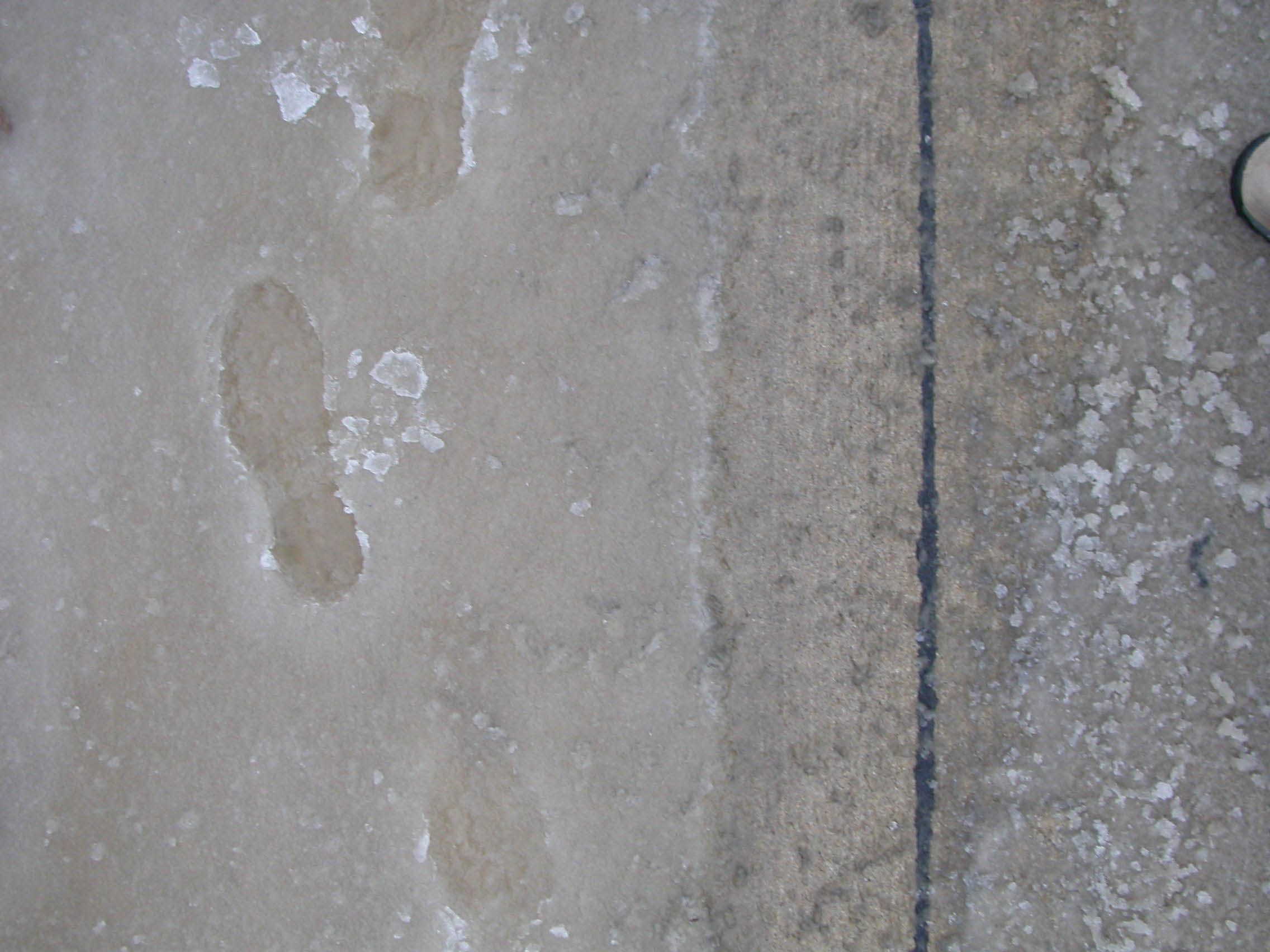This is the second in a series about an unusual winter puddle in Columbia, Missouri.
Recall from last time that I mentioned that the water feeding the puddle would be coming to the surface from under the ground – either a broken pipe or water flowing horizontally through the soil
In my recent 27 February blog about the air temperature and the surface temperature , I wrote about the “energy budget” of air about 1.5 meters above the surface (to explain why the maximum temperature was in the late afternoon), and I also wrote about the surface temperature, which reaches a maximum in the early afternoon.
To understand why the water feeding the puddle (and the surrounding soil) wasn’t frozen, we need to learn something about how temperature varies with depth beneath the surface.
The heating and cooling below ground is mostly by conduction. During the winter, the surface vegetation protects the soil from cooling, and upper soil layers protect the soil layers farther down.
For example, Figure 3 compares the air temperature and the temperature just 2 cm below the surface on a corn/soybean farm near Champaign, Illinois, USA (near Chicago). While the air temperature fluctuates quite a bit, the temperature at 2 centimeters below the surface changes much less. Particularly interesting is the cold weather between about 25 February and 5 March, when the soil temperature stayed warm in spite of the cold night-time temperatures. Figure 4 focuses more closely on that time period.
Figures 3 For February and March 2002, air temperature and soil temperature (Ts) at 2 cm below the surface, a corn/soybean farm near Champaign, Illinois (Latitude 40.00621, Longitude -88.29041). Day 30 = 30 January; Day 60 – 1 March, Day 90 – 31 March). Data available on the Web at http://cdiac.ornl.gov/ftp/ameriflux/data/Level1/Sites_ByName/Bondville/FLUX-2002/.
Figure 4. For the 25 Feburary-6 March time period on Figure 5, Air temperature, surface temperature, and soil temperatures down to 64 cm below the ground.
Notice that the soil temperature gets warmer as you go down, illustrating the “insulation” effect of the higher layers of soil. From Figure 5, we see a similar pattern at Smileyberg, Kansas. On average, the soil temperature at Smileyberg was 1.9 degrees Celsius warmer than the air temperature in January, and 1.1 degrees warmer than the air temperature in February. Notice how the ground stayed warm between Days 24 and 32 (24 January and 1 February), in spite of the cold temperatures. This is just like the behavior we saw at the Bondville site.
Figure 5. For grassland site near Smileyberg in Southeast Kansas, the Air temperature (about 2 m) and soil temperature (average 0-5 cm). Data from Argonne National Laboratory, courtesy R.E. Coulter, Argonne National Laboratory.
Thus it is quite believable that there could be liquid water close to the surface, particularly since the air was much warmer the week before I got to Missouri. (Since I saw no frozen water on the surface uphill of the road, the water could have come up through cracks in the road.)



